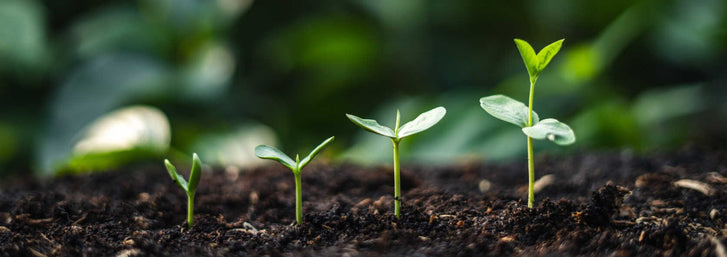
Jordan Freytag

The process of storing winter squash may seem to be long and complicated. Although it may take up to two weeks, the steps for preparing your squash for long term winter storage can be as easy as brewing summer tea. All you need it to know these three essential steps:
1. Be Careful When Harvesting
Try not to damage the squash or its main stem as you harvest. Be sure to use scissors or pruners when cutting vines. Pulling can cause damage to the main stem, making it likely that the squash with rot. Any squash with blemishes or areas where the skin has broken is not suitable for long-term storage. Basically, you are looking for a squash that is completely encased in its skin, this will protect the inner flesh as it is stored for several weeks. It is important to note that frost will compromise the longevity of the squash. Yes, frost will make them sweeter, but will make it so it only store about half as long. So, if you are planning on storing your squash for long periods of time, harvest before the first frost arrives.
2. Allow Time for Squash to “Cure”
All the curing process consists of is letting your squash rest for a period of 10 to 14 days in warm temperatures, preferably 75 to 80 degrees Fahrenheit, with good air circulation. What this does is release some of the excess water contained in the mature fruit. This process results in a sweeter squash because, as the water leaves, the natural sugars in the squash concentrate. The outer layers will condense and harden, creating a protective layer for the now sweeter fruit within.
Some varieties of squash don’t need curing such as Acorn. Some examples of squash that require curing are Blue Hubbard, Butternut, Spaghetti, Buttercup, and Connecticut Field Pumpkin.
3. Store in Ideal Conditions
Storing in a cool, dry place is imperative for making your squash last through the winter. Store squash at temperatures between 50 to 55 degrees Fahrenheit and at about 70 to 75 percent humidity. Wipe down your squash to ensure the surface is rid of any moisture, and don’t store on cold cement floors. Consider using wooded shelves to keep them off the ground. Discard any squash that shows signs of decay as they may cause the others to follow. Avoid storing near ripening fruits, such as apples, since the ethylene gas will shorten the longevity of your squash, causing it to yellow sooner.
Different varieties of squash vary in their life span. Here is an estimate of the examples I’ve mentioned:
Acorn: 4 weeks
Spaghetti: 4 to 5 weeks
Buttercup: 13 weeks
Butternut: 6 months
Blue Hubbard: 6 to 7 months
Connecticut Field Pumpkin: 2 to 3 months
Leave a comment
Your email address will not be published. Required fields are marked *
0 Comments
No Comments yet! Be the first to start a conversation
Further Reading

Reviewing the Aquatree Garden: A True Leaf Market Experience
The AquaTree Garden is an innovative growing experience! This nifty appliance allows you to grow leafy greens, microgreens, herbs, large sprouts, and vegetable starts (like tomatoes) all at once! When it comes to indoor gardening, there is no question ...

Ashleigh Smith
2024-04-225 min read1
Parasitoid Wasps: A Beneficial Insect in the Garden
Written By Lara Wadsworth There are estimated to be around one million different species of parasitic wasps worldwide. In fact, most wasps are parasitic, which means they live on or in a host at the host's expense. For common garden pests like aphids, ...

Ashleigh Smith
2024-04-226 min read0
Succession Planting: The Key to a Continual Harvest
Do you find yourself harvesting large amounts of any given vegetable from your garden all at once? There is a solution! The practice of succession planting, or planting in segments over a period of time, allows you to harvest root vegetables, leafy gre...

Ashleigh Smith
2024-04-223 min read1
10 Natives of the Southwest USA for Pest Control
Written By Lara Wadsworth The Southwestern United States is a region incredibly unique to the rest of the country. The hot, dry weather can be challenging for plants and animals to thrive without additional help. That is why gardening with natives can ...

Ashleigh Smith
2024-04-157 min read0



